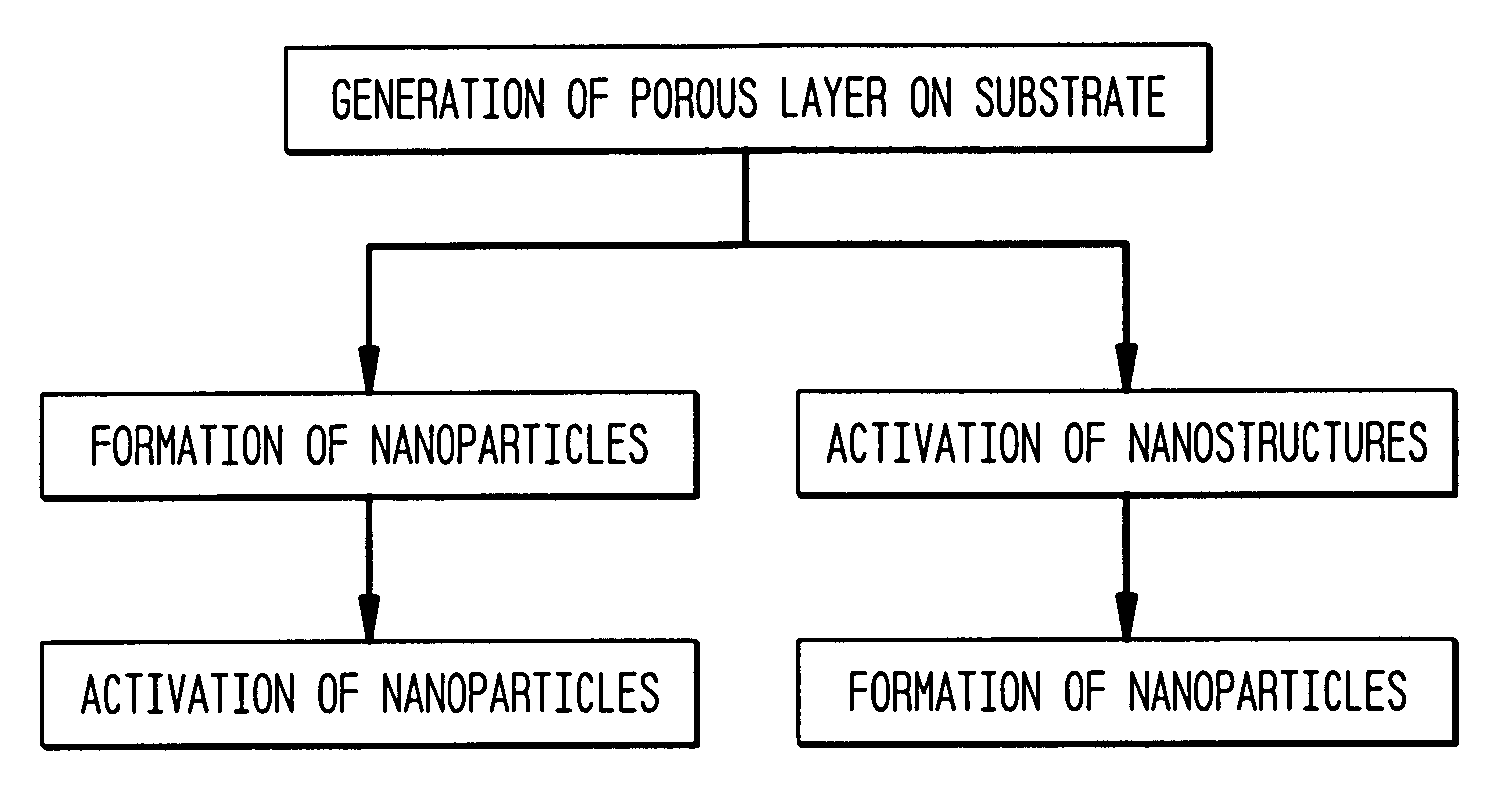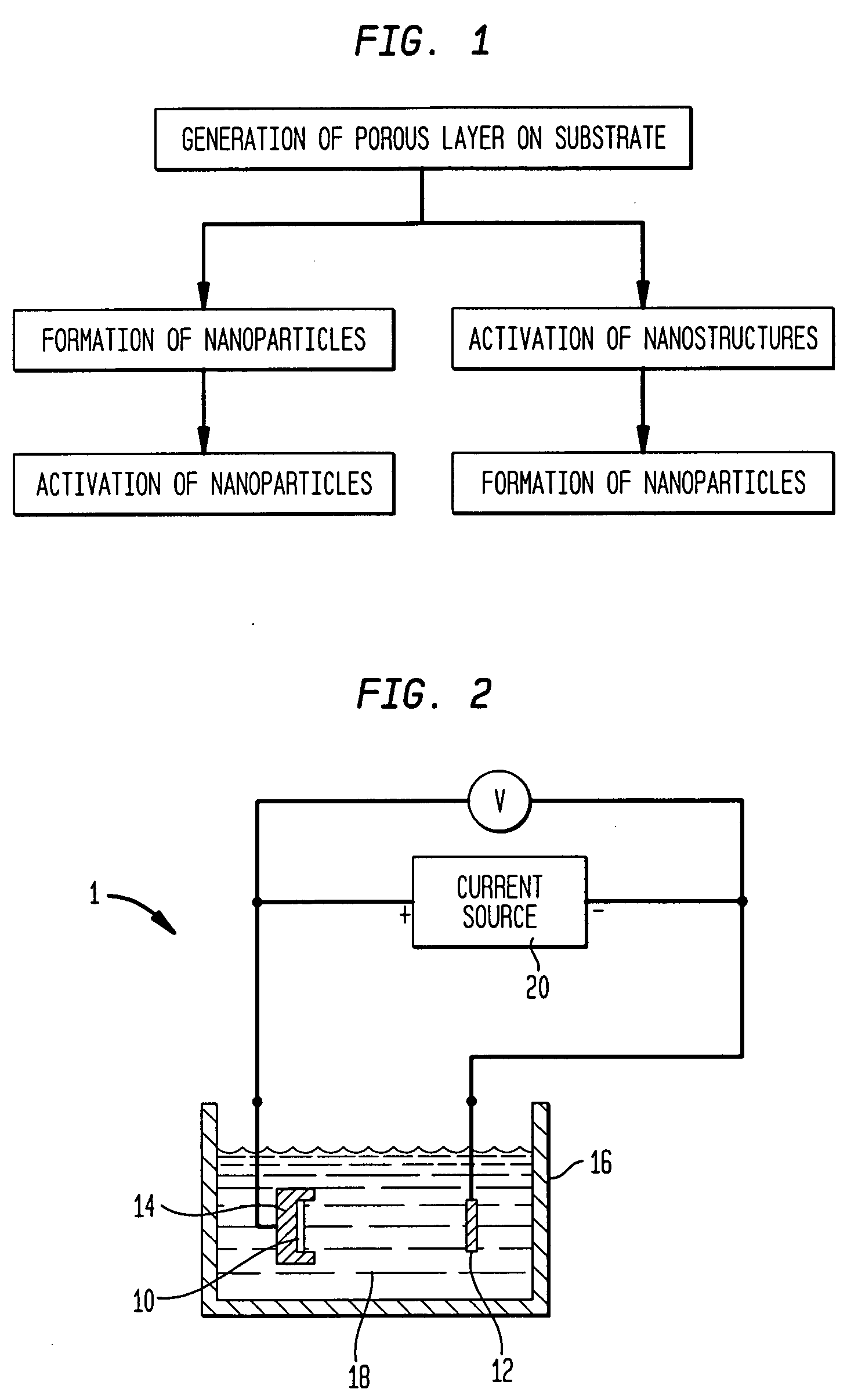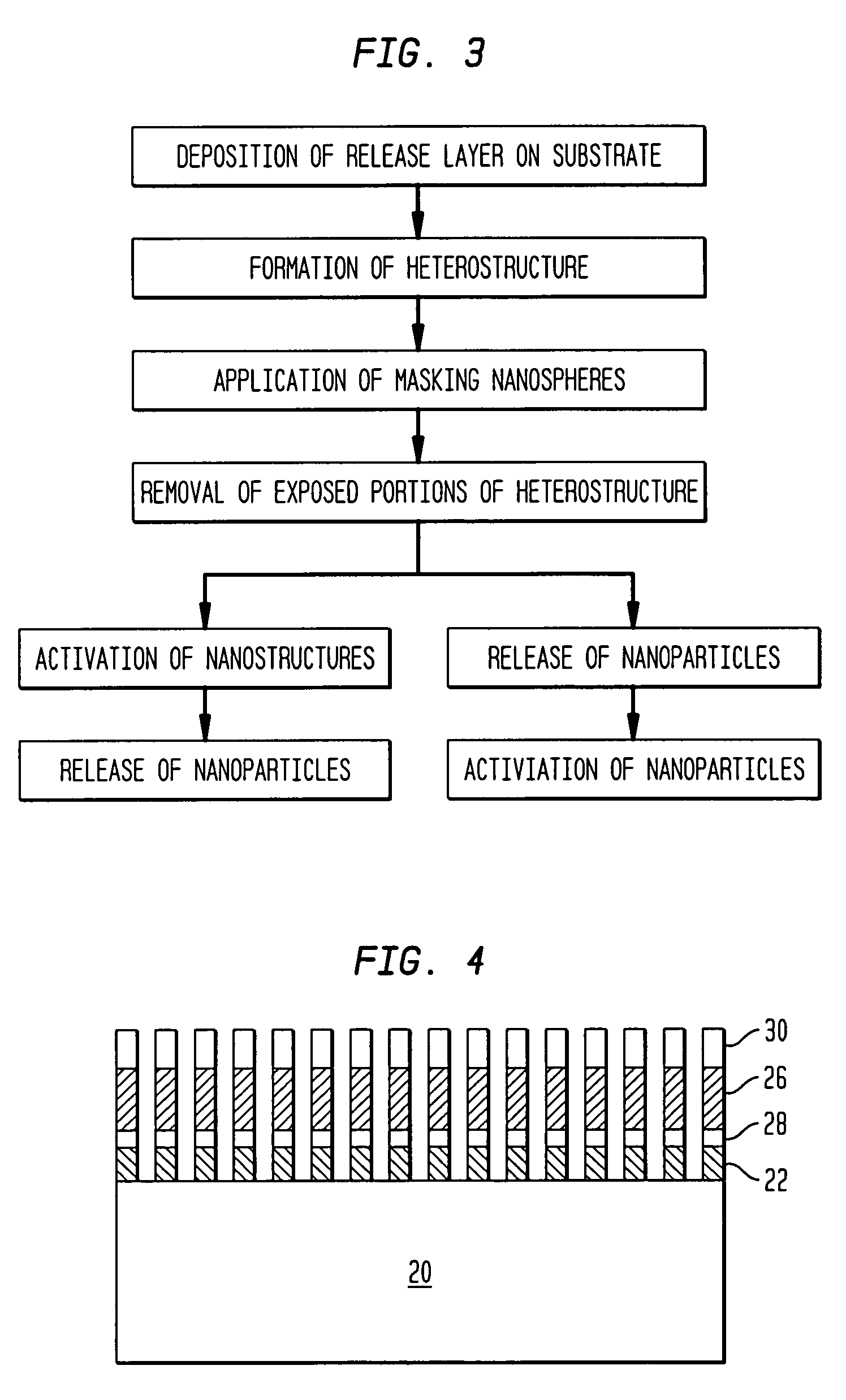Surface-activation of semiconductor nanostructures for biological applications
- Summary
- Abstract
- Description
- Claims
- Application Information
AI Technical Summary
Benefits of technology
Problems solved by technology
Method used
Image
Examples
Embodiment Construction
[0015] In one aspect, the present invention provides methods for producing surface-activated semiconductor nanoparticles suitable for in vitro and in vivo applications which can fluoresce in response to light excitation. The terms “quantum dots,”“nanostructures” and “nanoparticles” are used interchangeably herein to describe compositions on the order of less than a nanometer to a few micrometers in size, and more preferably from about 1 to about 100 nanometers of active device structure, that possess optical properties derived from excitation of a confined population of charge carriers.
[0016] The semiconductor nanostructures of the present invention can be activated in various ways, such as by exposing their surfaces to a plasma, oxidation or ion bombardment. Once the surface is activated, functionalization of the nanoparticle for either in vitro or in vivo use can occur.
[0017] So that the invention is more clearly defined, “activated” semiconductor nanostructures or “activated” s...
PUM
 Login to View More
Login to View More Abstract
Description
Claims
Application Information
 Login to View More
Login to View More - R&D
- Intellectual Property
- Life Sciences
- Materials
- Tech Scout
- Unparalleled Data Quality
- Higher Quality Content
- 60% Fewer Hallucinations
Browse by: Latest US Patents, China's latest patents, Technical Efficacy Thesaurus, Application Domain, Technology Topic, Popular Technical Reports.
© 2025 PatSnap. All rights reserved.Legal|Privacy policy|Modern Slavery Act Transparency Statement|Sitemap|About US| Contact US: help@patsnap.com



